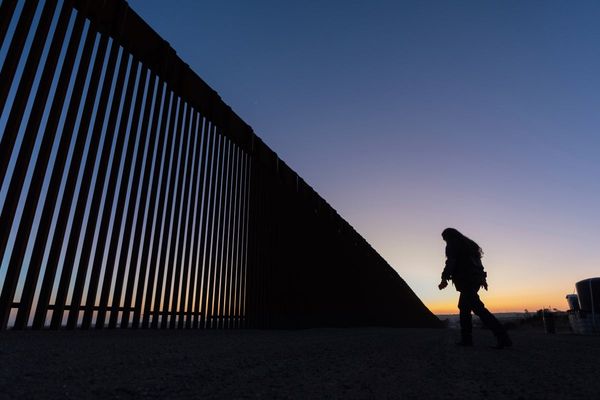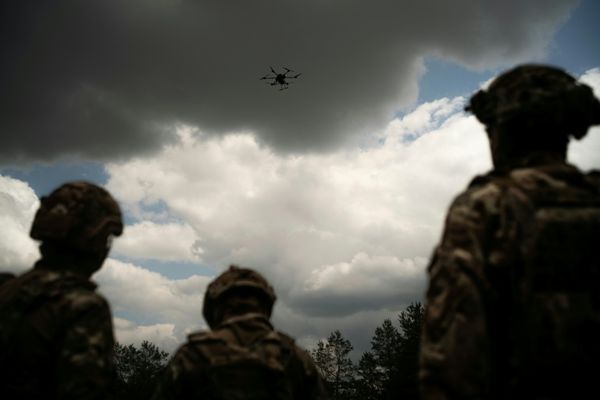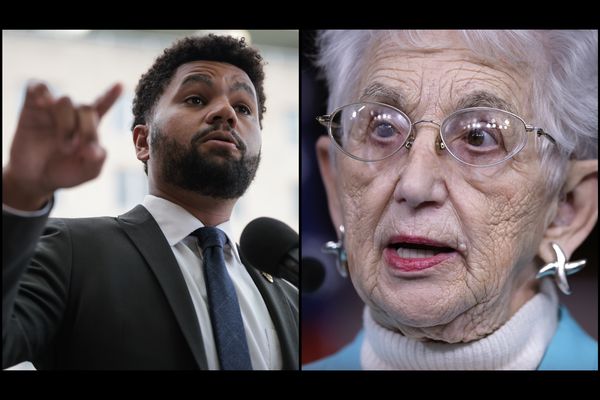
Australia has farewelled its ‘Queen of the Skies’, marking the end of one of the most significant chapters in our aviation history.
With nearly 50 years as one of the cornerstones of the Qantas fleet, the airline’s last 747 jumbo jet officially embarked on its final flight to the US, where it would soon be retired in California’s Mojave Desert.
Qantas flight QF7474, a Boeing 747-400, took off from Sydney Airport bound for Los Angeles shortly before 3.30pm on Wednesday afternoon.
The aircraft completed a winding loop above Sydney’s suburbs, before one last flourish over Sydney’s skyline and harbour for good measure.
Qantas’ last jumbo jet taking-off for the final time from an Australian airport. QF7474, with registration VH-OEJ, is flying from @SydneyAirport to @flyLAXairport where the ‘The Queen of the Skies’ will be retired after almost 50 years of service. #F7474 https://t.co/5QtIMpQdLA
— 7NEWS Sydney (@7NewsSydney) July 22, 2020
Qantas CEO Alan Joyce told a gathering of roughly 150 guests pre-flight that the company was bidding farewell to an aircraft that fundamentally changed Australia’s connectivity to the world.
“They have made the world smaller….it overcame the tyranny of distance that was and continued to be an issue for Australia,” Mr Joyce said.
The flight’s co-pilot, Greg Fitzgerald, told ABC Breakfast the flight represents the loss of one of the country’s great icons.
“Everybody in Australia, everybody in the world knows the shape of the 747,” Mr Fitzgerald said on Wednesday morning.
“It’s like Aeroplane Jelly and Vegemite – it’s always been there. We don’t know life without the 747.”
The arrival of the Boeing 747 in 1971 – the same year William McMahon became Prime Minister and Australia welcomed its first McDonald’s – made international travel economically possible for millions of people.
Tweet from @CaitlinDugan
Their size, range and reliability also meant the 747s were used for rescue missions after disasters such as Cyclone Tracy in 1974, where it helped fly more than 670 passengers out of Darwin in the immediate aftermath.
The fleet also assisted during the Boxing Day Tsunami in 2004, and more recently featured in the recovery of hundreds of Australians stranded in the coronavirus epicentre of Wuhan in February.
However, given the ongoing financial constraints hitting the world’s airlines, it had not only fallen foul of Qantas, but other international carriers including British Airways, Virgin Atlantic and KLM.
Shortly after arriving at LAX around 2.15pm Wednesday (local time), it would then be carted to the Mojave Desert to join the fleets of yesteryear, and stripped for parts.
Tweet from @flightradar24
Mr Joyce said the 747 fleet ushered in a new era of lower fares and non-stop flights.
“It’s hard to overstate the impact the 747 had on aviation and a country as far away as Australia,” Mr Joyce said in a statement on Wednesday.
“This aircraft was well ahead of its time and extremely capable.
“But time has overtaken the 747 and we now have a much more fuel efficient aircraft with even better range in our fleet, such as the 787 Dreamliner.”
The revolutionary Dreamliner has helped facilitate non-stop flights from Perth to London and soon, Qantas expects the Airbus A350 will be used in its non-stop Project Sunrise flights to New York and London.
Tweet from @danilic
The airline’s first female captain, Sharelle Quinn, who is in command of the final flight, said it had been an “absolute privilege” to fly the aircraft for 36 years.
“It has been a wonderful part of our history, a truly ground-breaking aircraft, and while we are sad to see our last one go, it’s time to hand over to the next generation of aircraft that are a lot more efficient,” Ms Quinn said.







